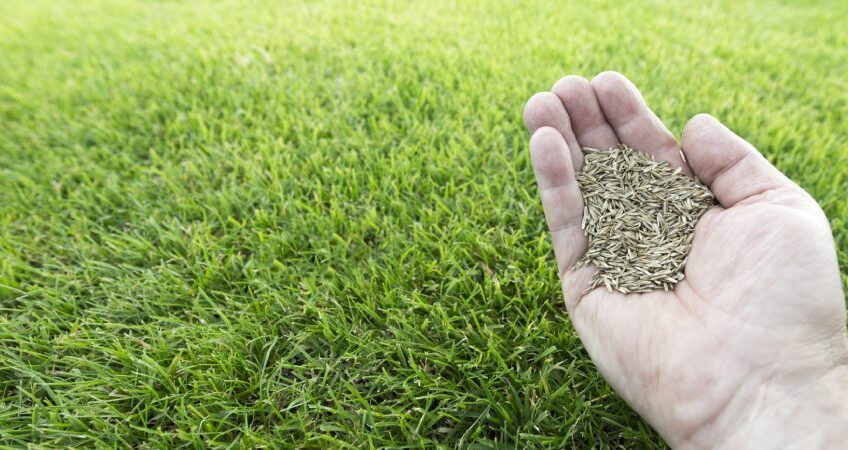Summer is certainly not the ideal time to establish cool-season turfgrasses due to high temperatures, long day-length, disease pressure and especially weed competition. The optimum growing temperatures for cool-season turfgrasses are in the range from 60 to 75 degrees Fahrenheit, so occasionally during some of our warmer stretches of weather the nighttime temperatures might not even fall within this range. Long day-length or more hours of sunlight results in more hours in the day for drying the soil. Maintaining that delicate balance of soil moisture between too wet and too dry is more challenging during the summer due to the extended drying period.
WHEN’S THE BEST TIME TO PLANT?
The best time to plant depends on where you live and the type of grass you’re planting. If you live in the North and are planting cool-season grass varieties, like Kentucky bluegrass, perennial ryegrass, or fescues, the best time to plant grass seed is the spring and again in the fall. Cool-season grasses grow most actively when the air temperatures are between 50 and 80 degrees F, the soil temperature is 50 to 65 degree F, and rain is plentiful. Cool-season grasses go dormant and do not grow during hot weather, when the soil temperature goes above 65 degrees F. Since this is common during the peak summer months, planting cool-season grass seed can result in poor seed germination or even seedling death.
On the other hand, if you live in the South and are planting warm-season grass varieties, like centipedegrass, zoysiagrass, bahiagrass, or bermudagrass, the best time to seed is late spring through mid-summer. Warm-season grasses are originally from tropical areas of the world and, once established, are able to thrive in scorching sun and high temperatures. They grow most actively when air temperatures are warm, between 70 and 90 degrees F. In addition, seeds need warmer soil temperatures than cool-season grasses to germinate (ideally between 65 and 70 degrees F).
PLANTING IN THE HEAT
If you live in the South and decide to plant a warm-season grass in the heat of summer, or if you have young grass seedlings still trying to become established when the weather turns hot, try these tips for success.
1. USE HIGH-QUALITY GRASS SEED
Choose a Grass Seed that is right for your location. Also, be sure to take into consideration the growing conditions of your area: How much wear and tear will the lawn get from children and the family pet? How much sun? Is the soil sandy?
2. BE METICULOUS ABOUT WATERING
If you want a thick, green lawn later, how you water your new lawn plays a very important role. Once your grass seed is planted, the top inch of soil should be kept consistently moist but not soggy for the first 2 to 3 weeks. This means misting the seeded area with water daily, or more if needed. If the weather is hot and dry, you will need to mist more frequently. After your grass seed has sprouted, keep the top 2 inches of soil moist, but allow it to dry slightly between waterings. This will encourage the grass roots to start growing deep in the soil. As your grass seedlings continue to grow, continue to reduce the watering to every 2 to 3 days.
3. WATCH OUT FOR HOT DAYS WITH HEAVY RAIN
If the extended weather forecast is calling for extremely hot temperatures, high humidity, and lots of rain, it’s a good idea to hold off on planting grass seed.
4. KNOW THAT HOT, STICKY NIGHTS CAN LEAD TO GRASS DISEASE
High nighttime temperatures above 65 degrees F, combined with excess moisture and humidity, are particularly stressful for young grass seedlings. Lawn fungal diseases such as damping off (Pythium) and brown patch (Rhizoctonia) become very active under these conditions. They can attack and possibly kill young grass seedlings. To help prevent these problems, make sure the planting area is well-drained before seeding and always follow the seeding rate on the back of the bag.

